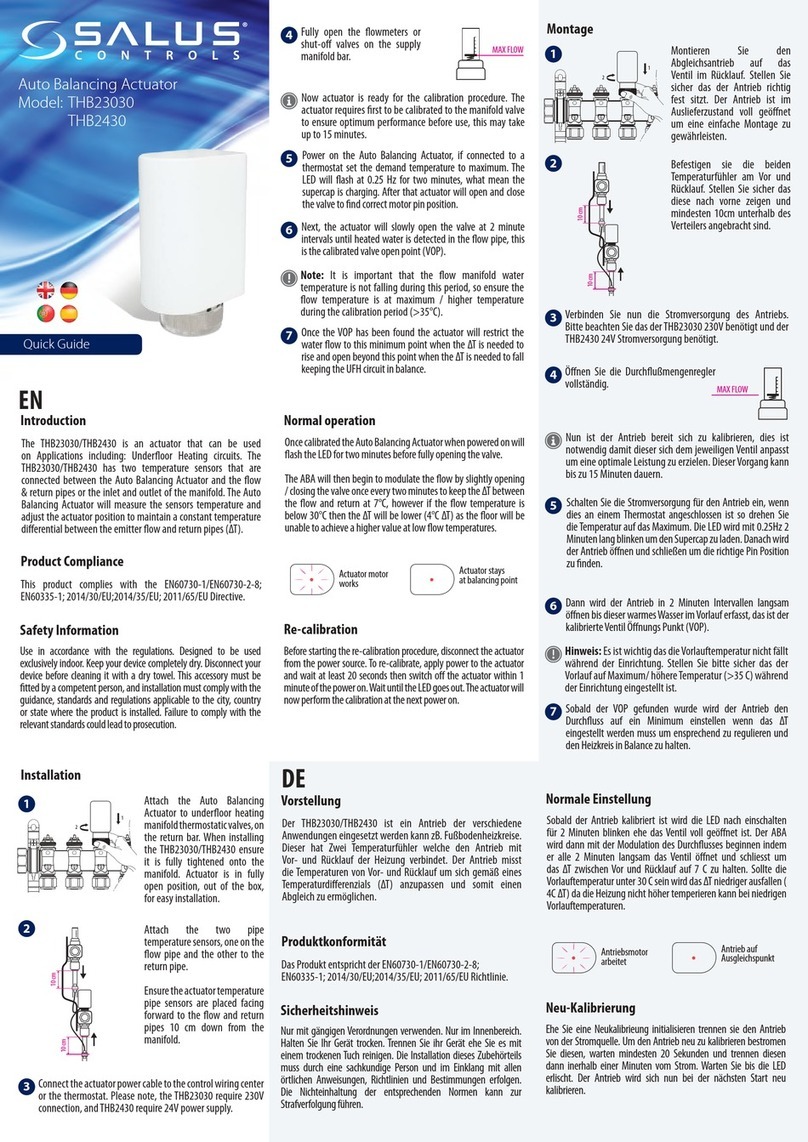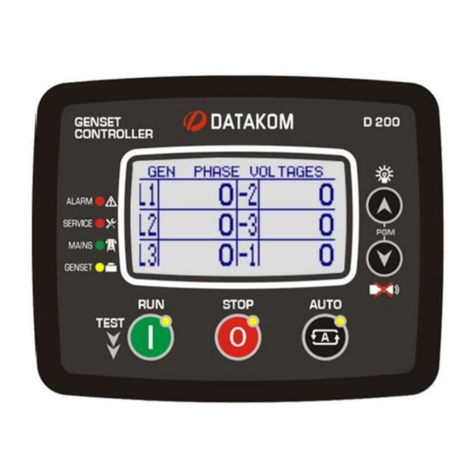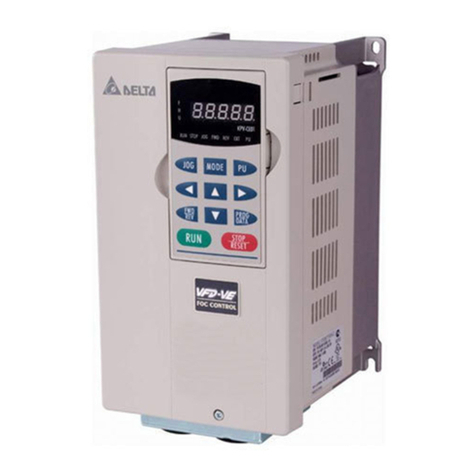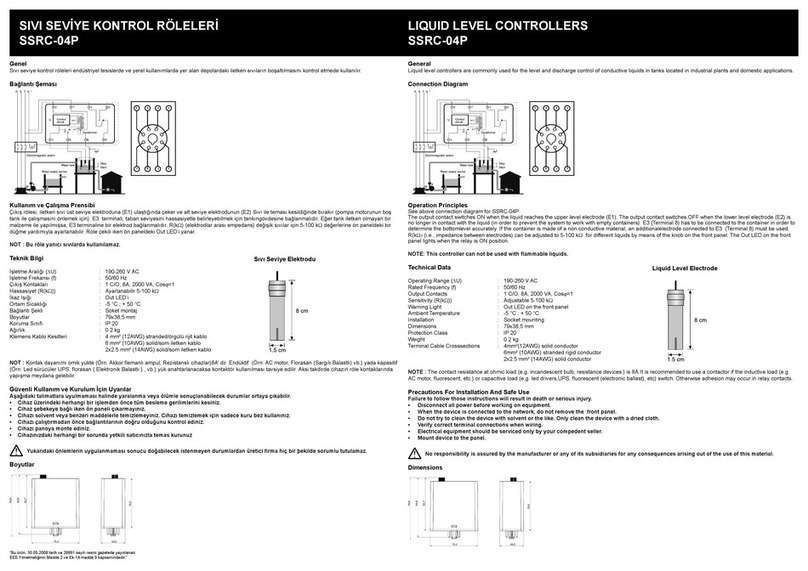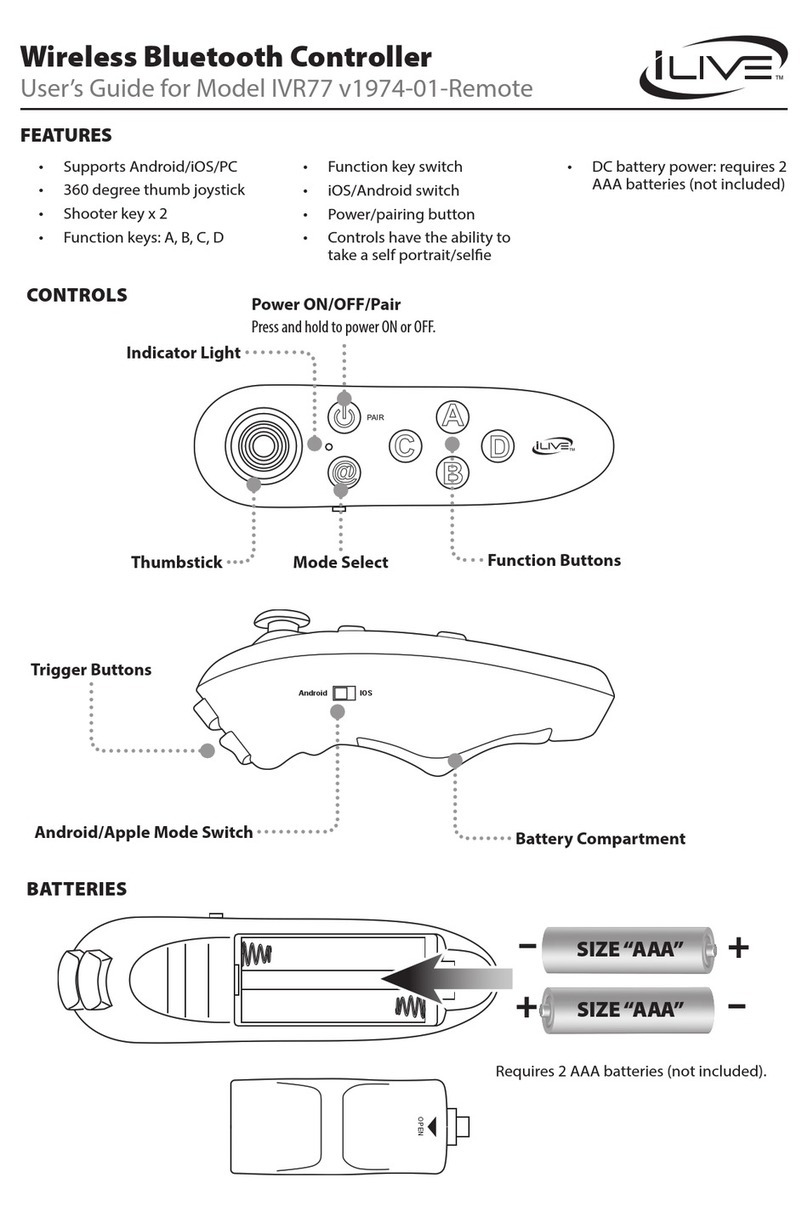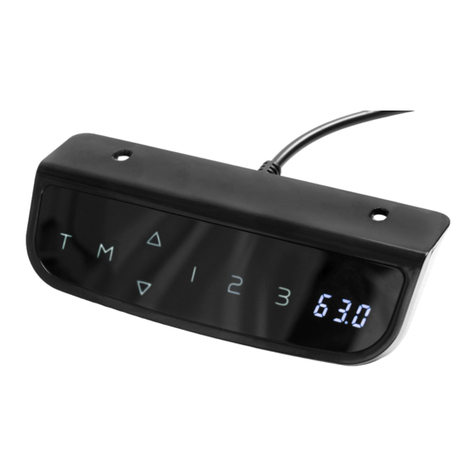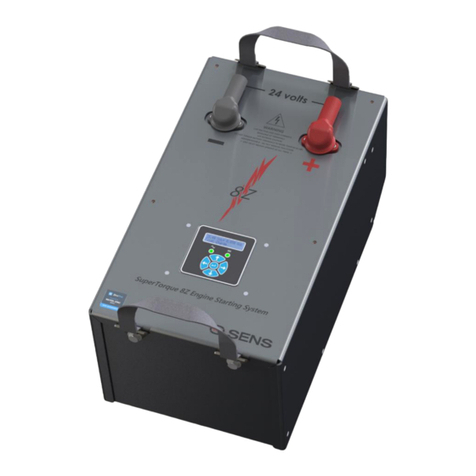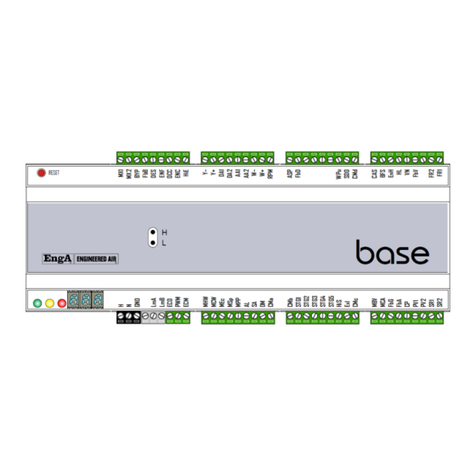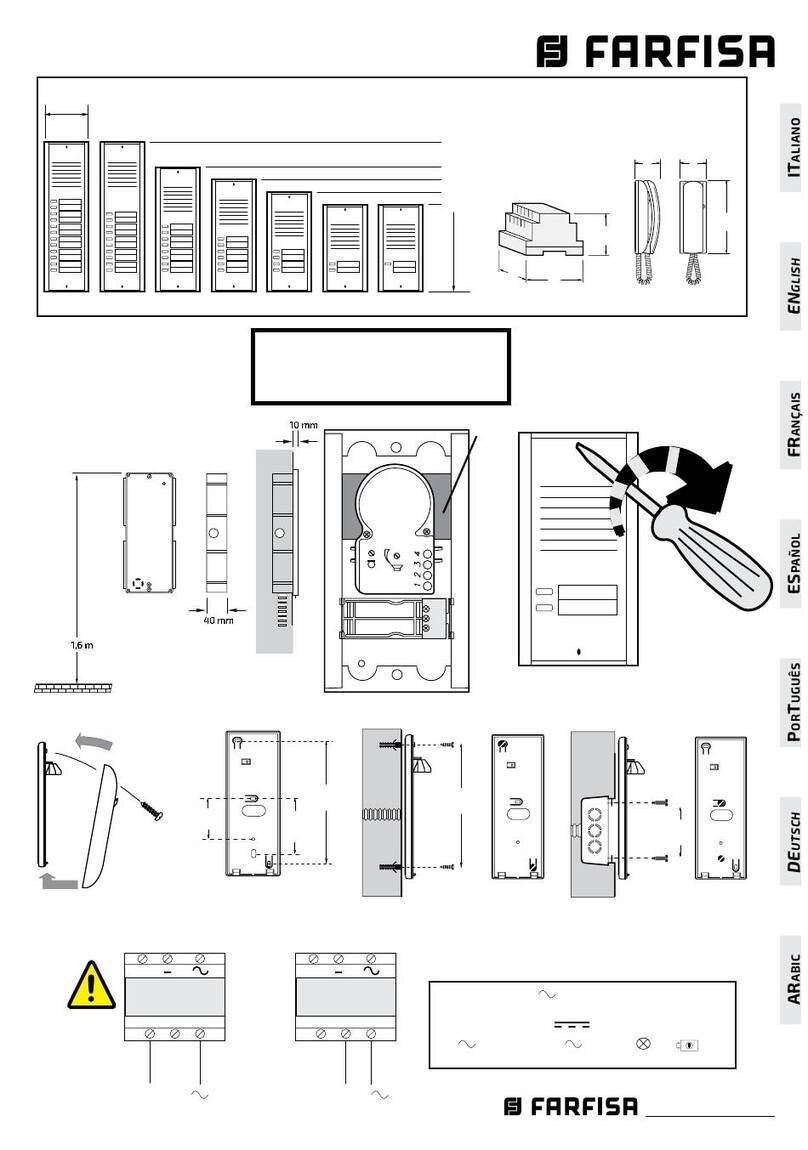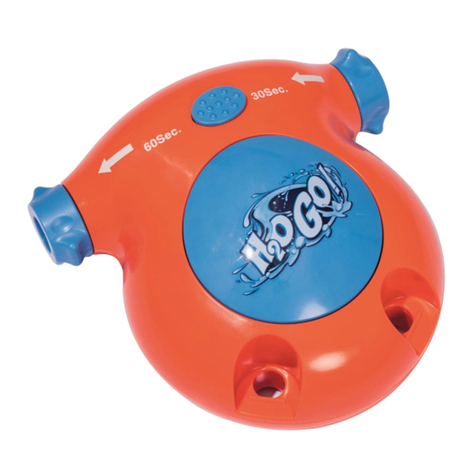Allen Organ Company LLC Classic R-10 User manual

R-10
2 Manual Classic Series
w/REN-25 Console ControllerTM
IMPORTANT! The Renaissance-25 Console Controller Guide may be downloaded and/or
printed separately.
Copyri ht © 2023 Allen Or an Company LLC
All Ri hts Reserved
AOC P/N 033-00282 Revised 2/2023

ALLEN ORGAN COMPANY
Congratulations on the purchase of your new Allen Or an! You have acquired the most advanced
electronic or an ever built, one that harnesses a sophisticated custom computer system to create and
control beautiful or an sound.
Your or an technolo y is the culmination of decades of advancements in di ital sound and control
techniques by Allen Or an Company. This system represents the pinnacle of di ital technolo y
applied to exactin musical tasks. The result is a musical instrument of remarkably advanced tone
quality and performance.
The Console ControllerTM Reference Guide is available for download from the Allen Or an
Company website at: https://www.allenor an.com/support/manuals-and- uides.html. Enter this link
into your browser and then click on the appropriate link to download the associated manual. Use the
link for the Renaissance-25 Console Controller Guide.
Your Allen Or an Warranty should be completed usin the online Warranty re istration tool at:
https://www.allenor an.com/warrantyre /frmre warranty.html. Please complete all required fields
and click the link at the bottom of the pa e to submit the warranty re istration.
Note: All data entered, personal or otherwise, will not be shared or sold to any third party.
Contents
I. ORGAN STOPS...........................................................................................................................1
II. STOP CONTROLS......................................................................................................................2
III. SPECIALIZED STOP CONTROLS............................................................................................3
IV. EXPRESSION SHOES................................................................................................................4
V. KEYBOARDS..............................................................................................................................4
VI. LUMITECHTM CAPTURE...........................................................................................................4
VII. SETTING CAPTURE REGISTRATIONS..................................................................................5
VIII. ARTISTIC REGISTRATION......................................................................................................5
IX. TRANSPOSER.............................................................................................................................8
X. ACOUSTIC PORTRAITTM..........................................................................................................9
XI. INSTALLATION, VOICING, AND CARE OF THE ORGAN................................................10
XII. SAFETY INFORMATION........................................................................................................11
APPENDIX A: MIDI IMPLEMENTATION CHART...............................................................13
i

I. ORGAN STOPS
PITCH FOOTAGE
The number appearin on each stop, alon with its name, indicates the “pitch” or “re ister” of
the particular stop. Or ans can produce notes of different pitches from a sin le playin key.
When this sound corresponds to the actual pitch of the played key, the stop is referred to as bein
of 8’ (ei ht foot) pitch; therefore, when an 8’ stop is selected and Middle C is depressed, the
pitch heard is Middle C. If the sounds are an octave hi her, it is called 4’ or octave pitch. If two
octaves hi her, it is called 2’ pitch. A stop soundin three octaves hi her is at a 1’ pitch.
Similarly, a 16’ stop sounds an octave lower and a 32’ stop two octaves lower.
Stops of 16’, 8’, 4’, 2’ and 1’ pitch all have octave relationships, that is, these whole numbered
stops all sound at octaves of whatever key is depressed. Non-octave pitches are also used in
or ans. Their foota e numbers contain a fraction and they are referred to as Mutations. Amon
these are the 2-2/3’ Nasard, 1-3/5’ Tierce, 1-1/3 Quintflöte and 2-2/3 Twelfth. Because they
introduce unusual pitch relationships with respect to the 8’ tone, they are most effective when
combined with other stops and used either in solo passa es or in small ensembles of flutes.
TONAL FAMILIES
. Flues
Or an tones divide into two main cate ories: flues and reeds. In pipe or ans, flue pipes are those
in which the sound is set in motion by wind strikin directly on the ed e of the mouth of the
pipe. Flues include principal, flute and strin tones. Compound stops and hybrid stops are
variations within these three stop families.
The term “imitative” means that the or an stop imitates the sound of a correspondin orchestral
instrument; for example, an imitative 8’ Viola stop sounds like an orchestral viola.
Principal Voices
Principal, Diapason,
Octave, Fifteenth,
Quinte
Characteristic or an tones, not imitative of any orchestral
instruments. Usually present at many pitches and in all
divisions. Rich, warm and harmonically well developed.
Flute Voices - Open:
Harmonic Flute,
Koppelflöte,
flute mutation stops
Flute Voices - Stopped:
Holz edackt, Bourdon,
Lieblich edackt,
Rohr Bourdon
Lesser harmonic development than Principals. Open flutes
are somewhat imitative; stopped flutes are not. Present at
all pitch levels and in all divisions.
Strin Voices
Gamba, Salicional,
Viole Céleste
Mildly imitative and bri hter harmonic development than
Principals. Usually appear at 8’ first; can be 4’ & 16’ ranks.
Compound Voices
Mixture, Fourniture Voices produced by more than one rank soundin
simultaneously. Best re istered with other stops.

Hybrid Voices
Erzähler, Spitzflöte
Voices that combine the tonal characteristic of two families
of sound, e. ., flutes and principals, or strin s and
principals.
2. Reeds
In reed pipes, a metal ton ue vibrates a ainst an open flattened side of a metal tube called a
shallot. The characteristic sounds of different reeds are produced throu h resonators of different
shapes. The family of reeds subdivides as follows:
Chorus or Ensemble:
Double Trumpet, Tromba,
Posaune, Clarion,
Bombarde
Solo:
Hautbois, Clarinet,
Krummhorn
Voices of reat harmonic development; some are imitative
of their orchestral counterparts.
Your Allen Or an provides authentic, di itally sampled voices. They are protected by
copyri hts owned by the Allen Or an Company and are stored in memory devices, each havin
affixed to it a copyri ht notice; e. ., © 2003 AOCO, © 2001 AOCO, etc., pursuant to Title 17 of
the United States Code, Section 101 et seq.
II. STOP CONTROLS
PEDAL ORGAN
Bourdon 16’ Stopped flute tone of wei ht and solidity.
Lieblich Gedackt 16’ Softer stopped flute of delicacy and definition. Useful where a soft
(Sw) 16’ pitch is required. **Expressed with the Swell division.
Octave 8’ 8’ member of the Pedal Principal chorus.
Flute 8’ Stopped flute tone of 8’ pitch, useful in addin clarity to a pedal line in
combination with the Bourdon 16’ or Lieblich Bourdon 16’.
Choral Bass 4’ Pedal 4’ principal tone.
(Gt)
Posaune 16’ A stron Pedal reed that lends stren th and “snarl” to the Pedal line.
Clarion 4’ A bri ht chorus reed. Also usable as a solo voice.
SWELL ORGAN
Gedackt 8’ Stopped Flute tone of moderate harmonic development. Provides the
8’ member of the Swell Flute chorus and is useful by itself or with
other flutes and mutations in creatin solo voices.
Viola Pomposa 8’ Full bodied strin tone.
Viola Celeste 8’ Strin tone, sli htly detuned, used with the Viole 8’ to create a warm
Strin celeste.
Octave Gei en 4’ Bri ht 4’ Principal tone.
Traverse Flute 4’ Distinctive flute voice that works well in ensembles of flutes or
strin s, or as a solo voice.
2

Nasard 2-2/3’ Flute mutation that sounds one octave and a fifth above the keys
played. Always used with other stops (usually be innin with 8’) for
coloration.
Piccolo 2’ A delicate, clear open flute at 2’ pitch.
Tierce 1-3/5’ Flute mutation that sounds a seventeenth (two octaves and a third)
above the keys played. Use mainly with 8’ stops or flute ensembles.
Fourniture IV Compound stop, or mixture comprised of Principal tones. Each note
played produces four distinct pitches at octave and fifth relationships to
the key bein pressed. The mixture should never be used without stops
of lower pitches. The Fourniture IV is typically added to Diapason or
Flute ensembles, or to a reed chorus.
Basson 16’ Chorus reed tone at the 16’ pitch level, desi ned to supplement the
other chorus reeds. Also usable as a distinctive solo reed.
Trompette 8’ Chorus reed stop of rich harmonic development. Can also be used as a
solo voice.
GREAT ORGAN
Lieblich Gedackt 16’ Softer stopped flute of delicacy and definition.
(Sw) **Expressed with the Swell division.
Diapason 8’ Foundation stop of the Great Principal chorus.
Harmonic Flute 8’ Open flute of considerable harmonic development. An excellent solo
stop.
Flute Celeste II 8’ Two soft flute sounds, one sli htly detuned from the other to create a
warm, shimmerin sound.
Octave 4’ The 4’ member of the Great Principal chorus.
Spitzflöte 4’ Partially stopped flute tone.
Fifteenth 2’ An open metal stop that produces foundation tone at the 2’ pitch level.
Also the 2’ member of the Great Principal chorus.
Mixture IV A compound stop of principal tones. Four notes in octave and fifth
relationships sound to ether when a sin le key is depressed. As
pitches pro ress upward, they “break” back to the next lower octave or
fifth. Used to cap the Great principal chorus, addin brilliance and
pitch definition throu hout the entire compass.
Krummhorn 8’ The tone quality of the shawm, a medieval ancestor of the clarinet, is
the basis for this li ht, bri ht, nasal reed. It can be used alone as a solo
or combined with li ht flues for a somewhat rounder reed solo effect.
Chimes Typical Tubular Chimes.
III. SPECIALIZED STOP CONTROLS
Some or an stop controls do not turn voices on/off, but instead turn on/off console functions
such as outlined in this Section.
Great to Pedal Connects all Great stops to the Pedal.
Swell to Pedal Connects all Swell stops to the Pedal.
Swell to Great Intermanual coupler connectin all Swell stops to the Great manual.
MIDI on Pedal Opens MIDI channel to the Pedal.
MIDI on Swell Opens MIDI channel to the Swell
3

MIDI on Great Opens MIDI channel to the Great.
Tremulant This stop provides a vibrato effect, natural in the human voice and
wind instruments within the selected division the control resides.
Tremulants Full When activated with one or more of the or an’s tremulants, it causes
the tremulants to become much deeper than normal classical
tremulants. Very useful for Gospel music. Also known as “Vibrato.”
Melody Coupler When playin on the Great manual, the hi hest key played on the
Great will automatically play all stops drawn on the Swell, in addition
to those drawn on the Great. By choosin a Swell stop, such as the
Festival Trumpet or Trumpet, the melody played by the top note on the
Great is accentuated.
Bass Coupler Similar to the Melody coupler, however, in this case the lowest note
played on the Great will also play all stops drawn in the Pedal
Division. This allows voices normally played from the pedalboard to
be heard without usin the pedalboard.
Alternate Tunin When activated, the or an’s tunin will chan e to the alternate tunin
selected from within the Console Controller. Reference the Console
Controller Guide for instructions on how to select and chan e the
Alternate Tunin .
IV. EXPRESSION SHOES
The or an’s control pedals (called “shoes”) control expression (volume).
The left shoe expresses the Great and Pedal Divisions.
The ri ht shoe expresses the Swell Division.
V. KEYBOARDS
The R-10 model utilizes industry standard keyboards with velocity sensitivity for the best
economical alternative option in playability and control.
VI. LUMITECHTM CAPTURE
State-of-the-art LED technolo y is incorporated into Allen’s exclusive LumitechTM Capture
System. LED's not only require less power, but last about 10-times lon er than incandescent
bulbs for the ultimate in reliability. Manually pressin the upper or lower portion of a
LumitechTM stop control will “to le” the on or off status of the stop. When the stop is lit, the
function of the stop control is activated. A “Self Check” feature within the Console ControllerTM
can be performed to test the LED indicators as well as the capture system at any time. Please
refer to the associated Console ControllerTM Guide for operatin instructions on the Self Check
function.
4

VII. SETTING CAPTURE REGISTRATIONS
Your Allen or an’s capture system lets you set stop re istration combinations in each of its
available capture memories. The R-10 model contains a set of General pistons located under the
left side of the Swell/Great manuals and also a set of Divisional pistons for each manual division
centrally located under both the Swell and Great manuals.
SETTING GENERAL PISTONS
General pistons will affect all stops in any division. Any stop turned on will be set within a
General piston re istration. To set a General piston:
First, turn on any stops you wish to save within a re istration.
Press and hold the SET Piston.
Press and release the desired GENERAL piston.
Finally, release the SET Piston.
Note: General pistons are customarily set from soft to loud using graduated stop combinations.
SETTING DIVISIONAL PISTONS
Divisional pistons are different in that they only affect the stops of a sin le division. For
example, only the Swell stops can be pro rammed onto a Swell divisional piston. Any Great
stops turned on while selectin or settin a Swell divisional piston will be unaffected or chan ed.
To set a Divisional piston:
First, only turn on stops within a sin le division you wish to save within a re istration.
Press and hold the SET Piston.
Press and release the desired DIVISIONAL piston.
Finally, release the SET Piston.
The pistons, General or Divisional, which have been set “remember” the re istration
combinations which have been assi ned to each of them. Each time a iven piston is pressed,
the re istration assi ned to it is activated. Stop re istration combinations may be chan ed at any
time by repeatin the above procedures.
VIII. ARTISTIC REGISTRATION
(Trained organists might not need to review this section.)
Or an re istrations fall into two broad cate ories; solo combinations and ensembles. A solo
combination is one in which a melody is played on one keyboard, the accompaniment on another
keyboard. The pedal often provides a li ht bass line. Almost any stop or combination of stops
will sound ood as a solo voice. A contrastin tone quality should be chosen for the
accompaniment, so that the accompaniment is softer than the solo voice. The Pedal stops must
provide a foundation for the solo and accompaniment without coverin them.
Most 8’ reed stops make interestin solo voices. The addition of a 4’ flute or a flute mutation
(e. ., Nasard or Tierce) to a reed such as the Trompette colors the sound further and increases its
volume sli htly. Addin an 8’ flute to a reed adds body to the sound.
5

Flutes can be used alone or in combinations as solo voices. One special combination of flutes
that creates an appealin and historically si nificant solo combination is the Cornet (pronounced
kor-NAY). The Cornet is created by usin the followin Swell stops: Gedackt 8’, Traverse
Flute 4’, Nasard 2-2/3’, Piccolo 2’ and Tierce 1-3/5’. This solo combination, widely used for
Baroque or an music, is just as appropriate for some modern music. Useful variations of the
Cornet may be achieved by eliminatin the 4’, the 2’, or even both.
When choosin stops for a solo voice, it is not always necessary to include an 8’ stop; for
example, since the 4’ flute has a tone quality different from that of the 8’ flute, the 4’ flute can be
used as an independent solo voice. By playin a solo voice an octave lower than written, the
notes sound at the correct pitch. In similar fashion, a 16’ stop can be selected and the notes
played an octave hi her than written. Tonal variety is ained, because each stop has its own tone
color. For accompaniment, the most desirable voices are the 8’ flutes or strin s on each manual.
Celestes often make effective accompaniments. The correct choice depends on the volume of
the solo tone (a soft solo voice requires the softest accompaniment stop), the element of contrast,
and the location of the solo stop. A bri ht, harmonically rich solo reed, for example, can be
accompanied by either a strin or flute, thou h the flute often contributes reater interest because
of its reater contrast. Try to seek a “natural” balance of volume between solo and
accompaniment.
SUGGESTED SOLO REGISTRATIONS
CHIMES SOLO
Swell: Gedackt 8’ or Viola Pomposa 8’, Viola Celeste 8’ or Flute Celeste II 8’
Great: Chimes
Pedal: Lieblich Gedackt (Sw) 16’, Swell to Pedal 8’
Play melody on Great and accompaniment on Swell
SOLO CORNET COMBINATION
Swell: Gedackt 8’, Traverse Flute 4’, Nasard 2-2/3’, Piccolo 2’, Tierce 1-3/5’
Great: Harmonic Flute 8’ or Flute Celeste II 8’
Pedal: Lieblich Gedackt 16’, Flute 8’
Play melody on Swell and accompaniment on Great
KRUMMHORN SOLO
Swell: Viola Pomposa 8’, Viola Celeste 8’
Great: Krummhorn 8’
Pedal: (Sw) Lieblich Gedackt 16’
Play melody on Great and accompaniment on Swell.
These few combinations demonstrate basic techniques of solo re istration. In creatin
re istrations of your own, remember these three simple rules:
Seek tonal contrast between solo and accompaniment.
Be sure the solo is louder than the accompaniment.
Choose a solo whose character is appropriate to the specific piece.
6

ENSEMBLE REGISTRATIONS
Volumes have been written on the subject of ensemble re istration. Followin is a summary of
the major points.
Ensemble re istrations involve roups of stops that are played to ether, usually, but not
always, with both hands on one keyboard. They are characterized by compatibility of
tone, clarity, and occasionally power. Such re istrations are used in hymn sin in , choir
accompaniments, and much of the contrapuntal or an literature.
Two factors are always to be considered: tone quality and pitch. Ensembles be in with a
few stops at the 8’ and/or 4’ pitch and expand “outward” in pitch as they build up. New
pitches are usually added in preference to another 8’ stop. Ensembles are enerally
divided into three tonal roupin s called “choruses”:
The Principal Chorus is the most fully developed with representation in various
divisions of the or an and at every pitch from 16’ to hi h mixtures. The Principal
Chorus is sometimes called the narrow-scale flue chorus, a reference to the relative
thinness of Principal pipes in relation to their len th.
The Flute Chorus is also well represented with a diversity of stops at various
pitches. Generally speakin , the Flute Chorus is composed of less harmonically
developed tones, and is smoother and of lesser volume than the Principal Chorus.
The Flute Chorus is sometimes called the wide-scale flue chorus, owin to the
enerally “fatter” look of Flute pipes as compared to Principals.
The Reed Chorus includes those reed tones desi ned to be used in the ensemble
buildup. Not all reed voices are ensemble tones. A Clarinet, for example, is usually
a solo stop. The various Trumpets, Clairons, Bassons, etc., are usually ensemble
voices that add brilliance, power, and incisiveness to the sound. If you have
questions as to whether a specific reed is a solo or ensemble stop, refer to the stop
list in the precedin section.
The Swell Reed Chorus is a special ensemble of Basson 16’ and Trompette 8’. It
represents an entity important to French or an music and the full ensemble of the
or an. These stops create a “blaze” of richly harmonic sounds that tops off both flue
choruses.
Another special ensemble combination important in French music is the Cornet (described in the
section on Solo Re istration). This combination can be used with the chorus reeds and mutations
to create the “Grand Jeu.” The Cornet is also useful in Romantic ensembles, addin wei ht and
thickness to the sound.
SUGGESTED ENSEMBLE COMBINATION REGISTRATIONS:
GREAT ENSEMBLE COMBINATIONS
1. Harmonic Flute 8’, Spitzflöte 4’
2. Harmonic Flute 8’, Spitzflöte 4’, Fifteenth 2’
3. Diapason 8’, Octave 4’
4. Diapason 8’, Octave 4’, Fifteenth 2’
5. Diapason 8’, Octave 4’, Fifteenth 2’, Mixture IV
6. Diapason 8’, Harmonic Flute 8’, Octave 4’, Spitzflöte 4’, Fifteenth 2’, Mixture IV
7

SWELL ENSEMBLE COMBINATIONS
1. Gedackt 8’, Viola Pomposa 8’
2. Gedackt 8’, Viola Pomposa 8’ Flûte 4’
3. Gedackt 8’, Viola Pomposa 8’ Flûte 4’, Piccolo 2’
4. Gedackt 8’, Viola Pomposa 8’ Flûte 4’, Piccolo 2’
5. Gedackt 8’, Viola Pomposa 8’ Flûte 4’, Piccolo 2’, Fourniture IV
6. Gedackt 8’, Viola Pomposa 8’ Flûte 4’, Piccolo 2’, Fourniture IV, Trompette 8’
The use of the Swell to Great coupler allows these separate ensembles to be combined on the
Great manual. It is also possible to combine some of these ensembles within the same division;
for example, when the #5 Great and #3 Swell re istrations are coupled to ether and played on
the Great, they combine to form a nice round hymn combination.
The Pedal ensemble is created in much the same way as the manual ensembles, startin at 16’
pitch instead of 8’. Be careful that the volume of the pedals is not reater than that of the
manuals. Althou h the manual to pedal couplers are useful in brin in clarity to the pedal line,
especially on softer re istrations, avoid the temptation to rely constantly on one or two 16’ stops
and a coupler. Please note that the softest stops and flute mutations are normally not used with
ensembles.
FULL ORGAN
Due to the immense capabilities of the or an, every stop and coupler on the instrument could be
used simultaneously without distortion, if the or an is adjusted properly. In ood re istration
practice, however, the or anist would not haphazardly put on every stop on the instrument. For
best results, listen and include only those stops that really contribute to the fullness and brilliance
of the ensemble. Eliminate soft stops and solo stops that make no purposeful contribution.
This short treatment barely scratches the surface of the fascinatin subject of or an re istration.
For those interested in ainin further insi ht into this vital area of or an playin , we
recommend the followin texts:
Audsley, Geor e Ashdown. Organ Stops and their Artistic Registration.
Hialeah, FL: C. P. P. Belwin, 1985.
Irwin, Stevens. Dictionary of Pipe Organ Stops. 2nd ed.
New York: Macmillan Books, 1983.
IX. TRANSPOSER
Vast computer capability makes it possible to perform the sometimes difficult task of
transposin , while allowin the or anist to play in the notated key. The Console ControllerTM
controls the operation of the Transposer.
Transposition to any of the twelve musical keys is possible. When the or an is turned ON, the
Transposer defaults to the neutral or zero position. The Transposer is displayed as a lar e di it
within the Console ControllerTM display (“0” is displayed on the ri ht side of the display).
To shift the music to a hi her key, you must first move the cursor position in the Console
Controller's display window so that the “0” symbol is selected. To move the cursor, repeatedly
press the button on the Console ControllerTM labeled "CURSOR" until the “0” symbol is
selected. Once the “0” symbol is selected, turn the Console Controller's Rotary Dial to select the
new musical key. Turnin the dial in a clockwise manner selects hi her keys and causes the
or an's pitch to rise. Turnin the dial in a counter-clockwise manner selects a lower key and
causes the or an's pitch to o lower. The pitch can be raised a maximum of five half-steps or
lowered a total of seven half-steps. Be aware that the Transposer’s ran e settin s "wrap around"
from the plus five half-step settin to the minus seven half-step settin (or vice-versa).
8

A red indicator li ht (LED) on the face of the Console ControllerTM illuminates any time the
Transposer settin is moved from the “0” or neutral pitch position.
Why Transpose?
Because a son ’s ran e does not always suit the vocal ran e of a particular sin er. By
adjustin the Transposer, the piece can be sun more comfortably and effectively.
Because some instruments are non-concert pitch. A trumpet in Bb, for example, can play
the same music as the or anist, if the Transposer knob is set two half steps lower.
Because hymn sin in can sometimes be improved by a more favorable key selection.
X. ACOUSTIC PORTRAITTM
Allen Or ans are the only di ital or ans to brin the science of samplin to acoustics! Ordinary
electronic reverb is a synthetic imitation of acoustics “applied to” the sound, not created as an
inte ral part of it. Acoustic Portrait™ produces the real thin in exactin detail!
Acoustic Portrait™ be ins with a samplin process usin impulse responses that measure an
actual room’s acoustic properties. These measurements are then stored in the or an's computer
memory. Throu h an advanced real-time mathematical process called “convolution”, the
acoustics of the sampled room actually become an inte ral part of the or an’s sound, producin a
noticeably smoother, more natural result than synthetic reverb. Allen en ineers have recorded
the acoustics of cathedrals and other acoustically desirable buildin s throu hout the world. With
advanced processors (DSP) and patented low-latency convolution al orithms, Acoustic
Portrait™ reproduces the true acoustic response of each ori inal room with stunnin realism!
Each or an equipped with Acoustic Portrait™ features 10 different Acoustic Portrait selections,
ran in from intimate rooms to cavernous cathedrals.
Available Reverb Selections
1. Pipe Chamber
2. Small Theatre
3. Small Church
4. Medium Room 1
5. Medium Room 2
6. Medium Room 3
7. Lar e Room 1
8. Lar e Room 2
9. Cathedral
10. Lar e Cathedral
The switch labeled “ACOUSTICS” on the Console Controller must be “ON” to hear the
selected reverb selection. The selected Acoustic Portrait ain, measured in dB (decibels), can
be accessed and adjusted within the Console Controller. Reference the associated Console
Controller uide for more detailed instructions on Acoustic Portrait™ settin s and adjustments.
9

XI. INSTALLATION, VOICING, AND CARE OF THE ORGAN
INSTALLATION
Wherever your or an may be situated, careful installation is a prerequisite to successful results.
Your Allen representative is well qualified to uide you in plannin the finest possible
installation. Factory assistance in plannin the installation is also available and may, in fact, be
sou ht by your Allen Or an representative.
VOICING
Your or an presents unprecedented accuracy in the scalin and voicin of each note of every
stop. Should any parameters be required to be chan ed, your Allen Or an representative is able
to make such chan es. Final adjustments in scalin and voicin involve procedures that are best
left to an expert. These adjustments are normally part of the installation, and once completed,
should not require chan es. If the or an is moved to a new location or major chan es are made
to the acoustical properties of the room the or an resides in, the instrument may need to be
tonally finished a ain.
CARE OF THE ORGAN
Your Allen Or an constitutes a major advance in lon -term maintenance-free operation. There
is no re ular maintenance procedures required and, therefore, no periodic maintenance schedules
to be observed.
Reasonable care will keep the instrument lookin beautiful for years to come. The wood
surfaces may be cleaned usin a soft cloth dampened with lukewarm water. A mild solution of
lukewarm water and dish deter ent may be used to remove fin erprints, etc. Polish dry with a
soft cloth. Do not use wax, sprays or oils on the finish. Satin finished surfaces will take on a
semi- loss appearance when waxed and will eventually become yellowed.
Keys and stop tablets should be cleaned in the followin manner: Use two clean cloths.
Immerse one in clear, lukewarm water and wrin it thorou hly damp dry. Loosen the dirt with
this cloth, and then polish immediately with the dry cloth. Do not use soap or deter ent on keys
or stop tablets.
To polish the clear music rack, a furniture wax polish may be sprayed on a soft dry cloth and
rubbed on the front of the music rack. Keep the wax off of the wood finishes. This will help
keep the music rack clear.
You have purchased a remarkable or an that not only faithfully reproduces the or an traditions
of the past but also anticipates the innovations of the future. Should you have questions that are
not addressed in this manual, please do not hesitate to contact your local Allen Or an
representative.
Welcome to the family of satisfied Allen Or an owners!
0

XII. SAFETY INFORMATION
USA ONLY
CAUTION
Never plu the instrument into any current source other than 110 to 120 volts, 50/60
Hertz alternatin current (AC). A verified rounded outlet is essential to proper
operation and protection of the instrument. Proper polarity should be checked with an
AC circuit analyzer before connectin the or an.
Do not chan e the cable plu or remove the round pin or connect with a two-pole
round lift adapter.
If you are in doubt about your electrical connection, consult your local electrician or
power company.
In facilities where circuit breakers are turned off between uses (as for example, between
worship services), the circuit breaker affectin the or an console AC power should have
a uard installed to prevent it from accidentally bein switched off.
It is important that you read and comply with all instructions and labels that mi ht be
attached to the instrument.
INTERNATIONAL ONLY
CAUTION
Do not plu the instrument into any current source other than that stated by the sellin
dealer. Proper polarity should be checked with an AC circuit analyzer before connectin
the or an.
Do not chan e the cable plu or remove the round pin (if applicable).
If you are in doubt about your electrical connection, consult your local electrician or
power company.
In facilities where circuit breakers are turned off between uses (as for example, between
worship services), the circuit breaker affectin the or an console AC power should have
a uard installed to prevent its bein accidentally switched off.
Read and comply with all instructions and labels that may be attached to the instrument.

Warning: This equipment enerates, uses, and can radiate radio frequency ener y
and, if not installed and used in accordance with the instruction manual, may
cause interference to radio communications. It has been type tested and found to
comply with the limits for a Class B Computin Device in accordance with the
specifications in Subpart J of Part 15 of FCC Rules, which are desi ned to
provide reasonable protection a ainst such interference in a residential
installation. Should this equipment cause interference to radio communications,
the user at his own expense will be required to take whatever measures may be
necessary to correct the interference. Whether this equipment actually causes the
interference to radio communications can be determined by turnin the equipment
off and on. The user is encoura ed to attempt to correct the interference by one or
more of the followin measures:
Reorient the receivin antenna.
Relocate the or an with respect to the receiver.
Move the or an away from the receiver.
Plu the or an into a different electrical outlet, so that the or an and receiver are
on different branch circuits.
If necessary, the user should consult the dealer or an experienced radio technician
for additional su estions.
CE mark shows compliance with the EMC Directive.
2

APPENDIX A: MIDI IMPLEMENTATION CHART
FUNCTION TRANSMITTED RECEIVED
Basic Default
Channel Chan ed
1 – 16
1 – 16
1 – 16
1 – 16
Default
Mode Messa es
Altered
3
X
X
3
X
X
Note Number O (1 – 127) O (1 – 127)
Velocity Note ON
Note OFF
9nH, v = 1 – 127
9nH, v = 0
9nH, v = 1 – 127
9nH, v = 0
Aftertouch Keys
Channels
X
X
X
X
Pitch Bend O O
Control Chan e 0 (bank select)
6 (Data MSB)
7 (volume)
64 (sustain)
66 (sostenuto)
98 (NRPN: LSB)
99 (NRPN: MSB)
O
O
O
O
O
O
O
X
O
O
O
O
O
O
Pro ram Chan e O (1 – 127) O (1 – 127)
System Exclusive O O
System Common X X
System Real Time X X
Aux Messa es X X
Mode 1: Omni On, Poly Mode 2: Omni On, Mono O: Yes
Mode 3: Omni Off, Poly Mode 4: Omni Off, Mono X: No
3
Table of contents
Popular Controllers manuals by other brands

Swagelok
Swagelok RHPS Series user manual
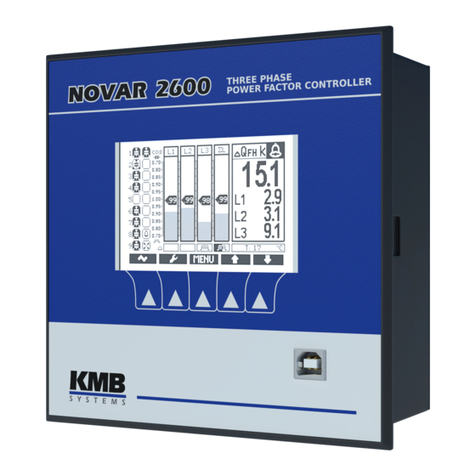
KMB
KMB NOVAR 2600 operating manual
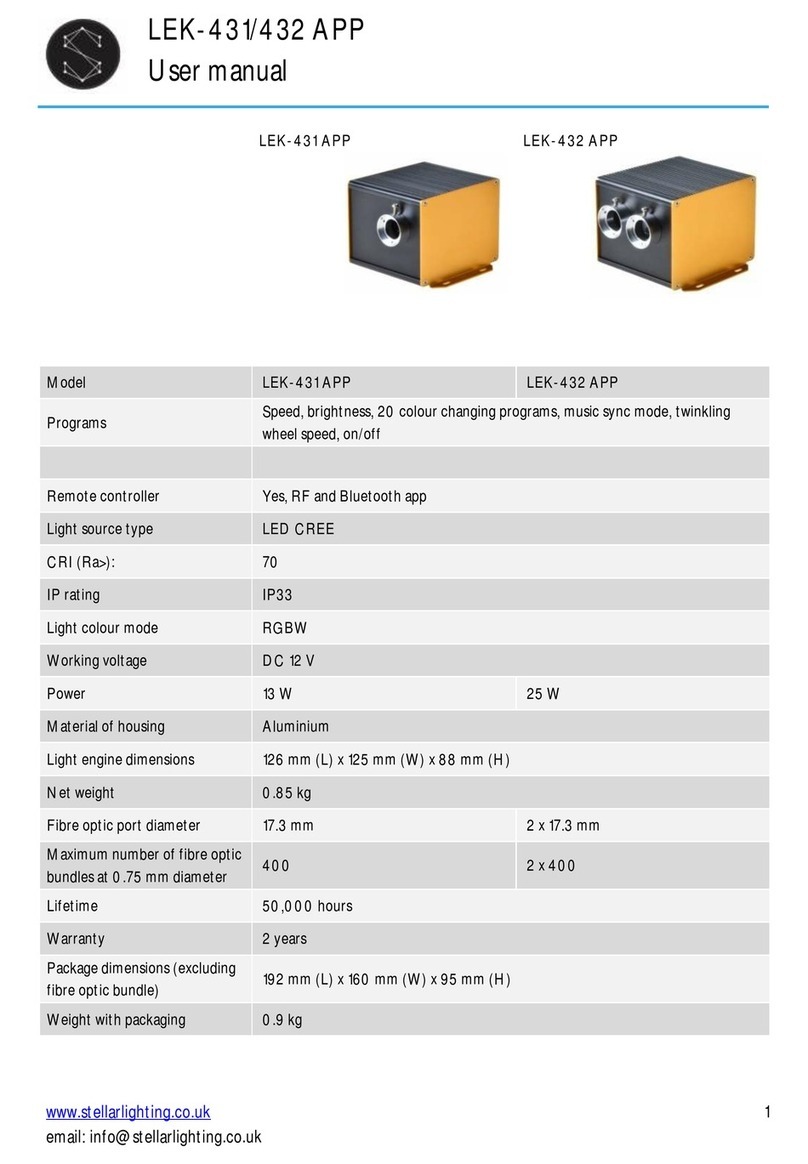
Stellar Lighting
Stellar Lighting LEK-431 APP user manual
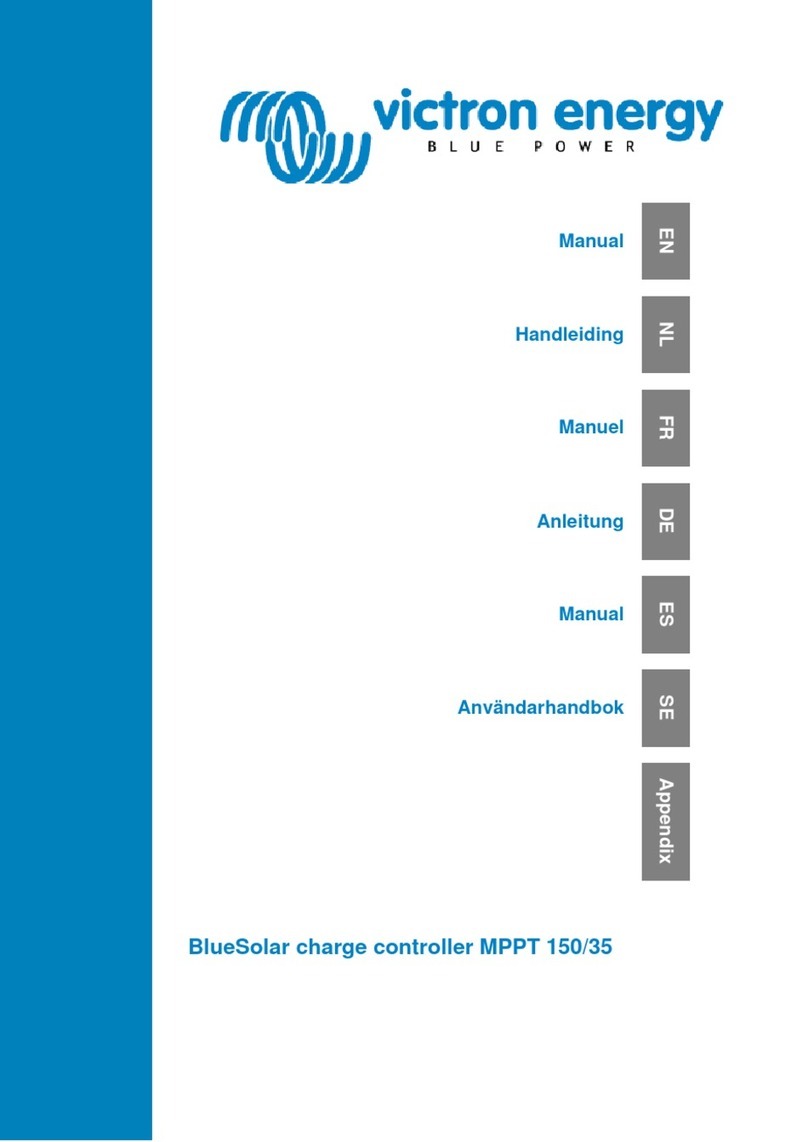
Victron energy
Victron energy BlueSolar MPPT 150/35 manual

Light O Rama
Light O Rama CMB24D DMX user manual
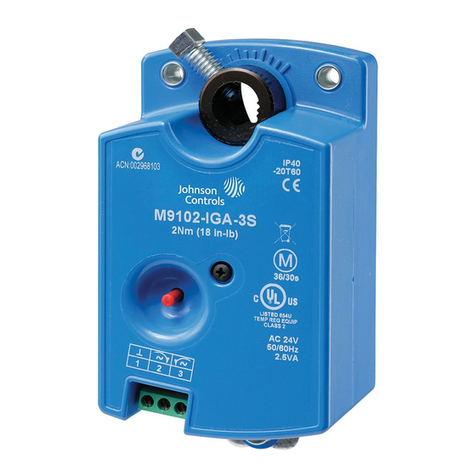
Johnson Controls
Johnson Controls M9102 GA-1S Series installation instructions


